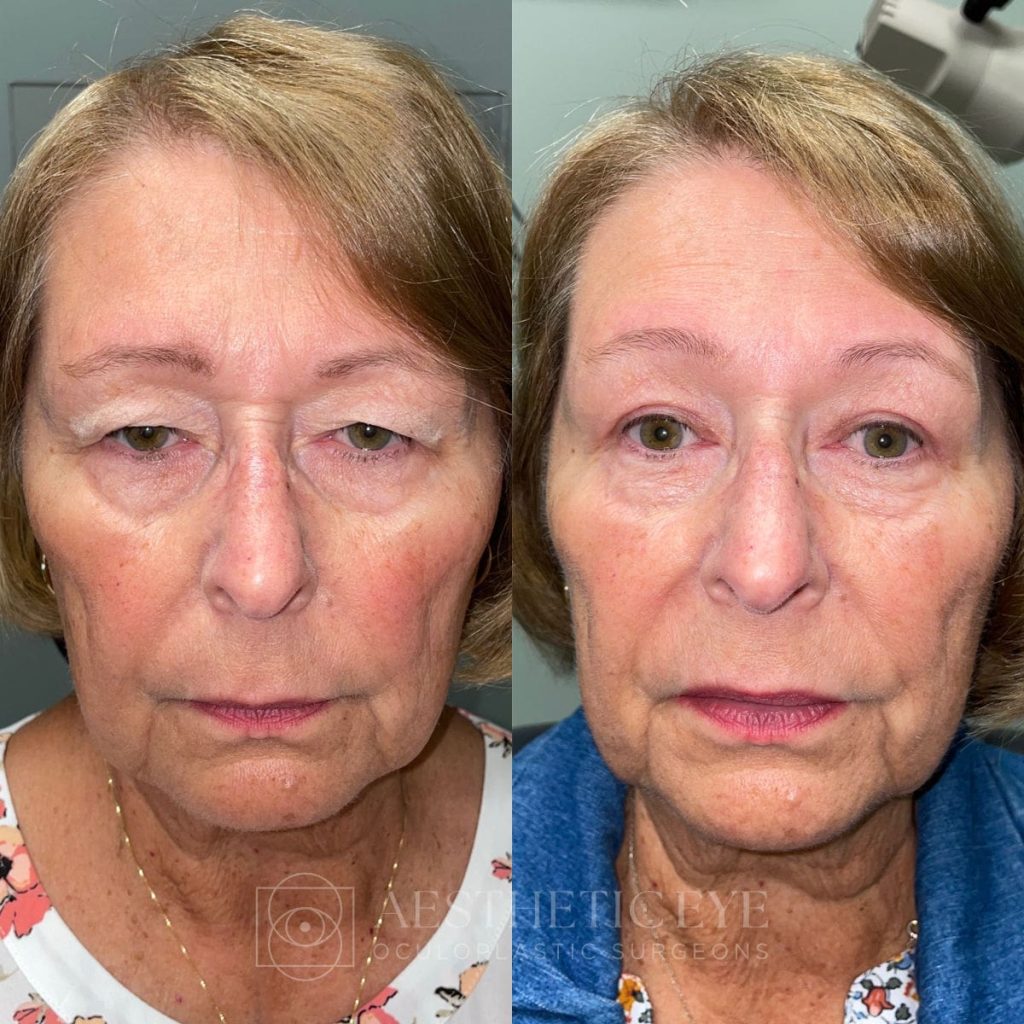Orbital tumors, which are growths that develop in the eye socket, can significantly affect vision, eye function, and overall health. At AestheticEye, our board-certified oculoplastic surgeons, Dr. Ginger Henson and Dr. Jonathan Pargament, are renowned for their expertise in diagnosing and surgically removing these complex tumors. With a focus on comprehensive care and advanced surgical techniques, our team is dedicated to delivering personalized treatment plans tailored to each patient’s unique needs.
Understanding Orbital Tumors
Orbital tumors can be benign (non-cancerous) or malignant (cancerous) growths that develop in the tissues surrounding the eye. These tumors can arise from the eye itself, the optic nerve, or other tissues within the orbit.
Dr. Ginger Henson was a perfect choice for me! She did an excellent job. I had no pain and healed up better than ever! I’m so happy with the job she did for me!
Types of Orbital Tumors
Orbital tumors can vary widely in type and severity. Common types include:
Benign Tumors
Such as dermoid cysts, hemangiomas, and meningiomas.
Malignant Tumors
Including lymphomas, sarcomas, and metastatic cancers.
Vascular Tumors
Such as cavernous hemangiomas.
Nerve Sheath Tumors
Like schwannomas and neurofibromas.
Symptoms of Eye Socket Tumors
The symptoms of orbital tumors can differ based on the type, size, and location of the tumor. Common signs include:
Proptosis (Bulging Eye)
A noticeable forward displacement of the eye.
Vision Changes
Blurred vision, double vision, or loss of vision.
Eye Pain or Discomfort
Persistent pain or discomfort around the eye.
Restricted Eye Movement
Difficulty moving the eye in various directions.
Swelling and Redness
Around the affected eye.
Advanced Orbital Tumor Removal Surgery in Cincinnati, OH
At AestheticEye, our surgeons utilize state-of-the-art techniques to diagnose and treat orbital tumors. Our approach is focused on preserving vision, restoring function, and ensuring the best possible cosmetic outcomes.
Diagnosis and Evaluation
A thorough diagnosis is crucial for developing an effective treatment plan. Our diagnostic process includes:
Comprehensive Eye Examination
To assess the overall health of your eyes and identify any abnormalities.
Imaging Studies
Such as MRI, CT scans, and ultrasound to determine the size, location, and characteristics of the tumor.
Biopsy
In some cases, a biopsy may be necessary to confirm the diagnosis and type of tumor.
Customized Surgical Plan from Oculoplastic Experts
Based on the diagnostic findings, Dr. Henson and Dr. Pargament will develop a customized surgical plan tailored to your specific condition. The goal is to remove the tumor while preserving as much normal tissue and function as possible.
Orbital Tumor Removal Surgery
Orbital tumor removal surgery involves precise techniques to ensure complete removal of the tumor with minimal impact on surrounding structures. The procedure may include:
Minimally Invasive Techniques
When possible, our surgeons use minimally invasive approaches to reduce recovery time and improve cosmetic outcomes.
Microsurgical Techniques
Advanced microsurgical tools and techniques to ensure precision and safety during the procedure.
Reconstructive Techniques
If necessary, reconstructive techniques are employed to restore the natural appearance and function of the orbit.
Recovery and Post-Operative Care
Recovery from orbital tumor removal surgery varies depending on the complexity of the procedure and the type of tumor. Our team provides comprehensive post-operative care to ensure a smooth and successful recovery.
Initial Recovery
Most patients experience mild swelling and bruising for the first few weeks.
Follow-Up Appointments
Regular follow-up visits to monitor healing and ensure optimal results.
Long-Term Monitoring
Ongoing monitoring to detect any signs of recurrence or complications.
Comprehensive Support in Eye Growths and Tumors
At AestheticEye, we are committed to supporting our patients throughout their recovery journey. Our team provides detailed post-operative care instructions and is always available to answer any questions or concerns.
Frequently Asked Questions | Orbital Tumor Removal Surgery
-
Orbital tumors are diagnosed through a combination of eye examinations, imaging studies (MRI, CT scans), and sometimes a biopsy to confirm the type and characteristics of the tumor.
-
The surgery is performed under general anesthesia, so you will not feel pain during the procedure. Post-operative discomfort is usually minimal and can be managed with prescribed medications.
-
As with any surgery, there are potential risks, including infection, bleeding, and complications related to anesthesia. These risks are minimized when the surgery is performed by experienced oculoplastic surgeons like Dr. Henson and Dr. Pargament.
-
While surgical removal is often effective, there is a chance of recurrence, particularly with malignant tumors. Regular follow-up appointments are essential for monitoring and early detection of any recurrence.
-
The impact on vision depends on the location and size of the tumor. In many cases, removing the tumor can alleviate symptoms and improve vision. However, some patients may require additional treatments or therapies to fully restore vision.
-
Recovery time varies, but most patients can resume normal activities within a few weeks. Complete healing and return to normal function may take several months, depending on the complexity of the surgery.
Schedule Your Consultation for Orbital Tumor Removal
If you are experiencing symptoms of an orbital tumor or have been diagnosed with one, contact AestheticEye today to schedule a consultation. Our expert surgeons, Dr. Ginger Henson and Dr. Jonathan Pargament, are here to provide you with the highest level of care and advanced surgical solutions. Discover the benefits of professional orbital tumor removal surgery at AestheticEye.
